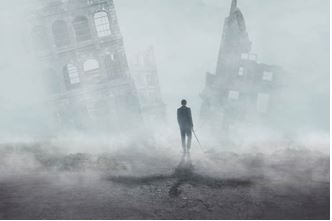Opera Blog - Lohengrin
Image taken from the Royal Opera House website
Lohengrin is a romantic three act opera, written by Richard Wagner and first performed in Weimar in 1850 under the patronage of King Ludwig. It was indeed this patronage that gave Wagner the means and opportunity to compose and build a theatre for and stage his epic cycle, the Ring of the Nibelung.
In using extensively the leitmotivs in his composition, Wagner was creating a new form of opera – the through composed music drama. Unlike the traditional opera composed at that time, which divided into arias, recitatives and choral sections, Lohengrin is played from act-to-act without interruption. However, a 4.5 hour evening normally does need intervals – more usually for personal reasons – but on this wonderful operatic night you always wanted to get back into the action.
David Alden recently directed the award winning production of Semiramide at the Royal Opera House and he could have another banker for the Royal Opera House with this Lohengrin. The sets are in no way pretty, quite often dark, gloomy dockside building sets to reflect the River Scheldt in Antwerp. The drama bas been brought up-to-date with a mid-20th century somewhere location. However, the direction and drama that Alden and his team produced is first rate.
The drab moving sets are designed by Paul Steinberg, with very reflective lighting by Adam Silverman, together with great and relevant movement and choreography by Maxine Braham. Some of the drama stands out, namely Ortrud’s expression and red dress at the end of Act 2 and the white swan on a backdrop of red and black Nazi flags, which were staggering.
The musical evening, containing some of Wagner’s most lyrical score, was controlled by the Conductor, Andris Nelsons, whose substantial orchestra in the pit and brass elsewhere in the auditorium, produced remarkable sound with great dramatic intensity. This intensity was encouraged by a huge and outstanding chorus, together with a cast on fine form, led by the shining god like figure of the tenor, Klaus Florian Vogt. With long golden locks you expect (and indeed we received) a substantial sound and authoritarian projection, although it is not always the sweetest of voices.
The two ladies, the Ortrud of the dramatic American soprano, Christine Goerke and the Elsa of the Irish soprano, Jennifer Davis, were both impressive in their own right. Christine Goerke might no longer possess the shining upper register that was once her trademark, but she still has the deep notes required for this role and displays great dramatic power. Jennifer Davis, until last year, was a member of the Jette Parker Young Artists and has not really tackled any role of great substance until her Lohengrin premier. She was the understudy for the original Elsa of Kristine Opolais. It is perhaps understandable, given her imminent divorce from the Conductor, Andris Nelsons, that Opolais did not want to continue in the role of Elsa, given the opera’s centrepiece Act 3 opening of Wagner’s wedding march, which is extensively used around the world today to celebrate marriage.
Therefore, the understudy was brought in at short notice and under the circumstances acquitted herself outstandingly. She has a beautifully toned soprano voice with real distinction and force when required and she can act the part as well.
The rest of the cast all performed well, with the Herald of Kostas Smoriginas and the King of Georg Zeppenfeld being of note. Thomas Mayer as Telramund was occasionally troubled trying to match the output of some of his fellow artists.
Overall, however, this Antwerp saga will be going home, as Aviel Cahn, the Director of Flanders Opera, is bringing this opera in a joint production to be performed at Antwerp later this year. Catch it if you can.







